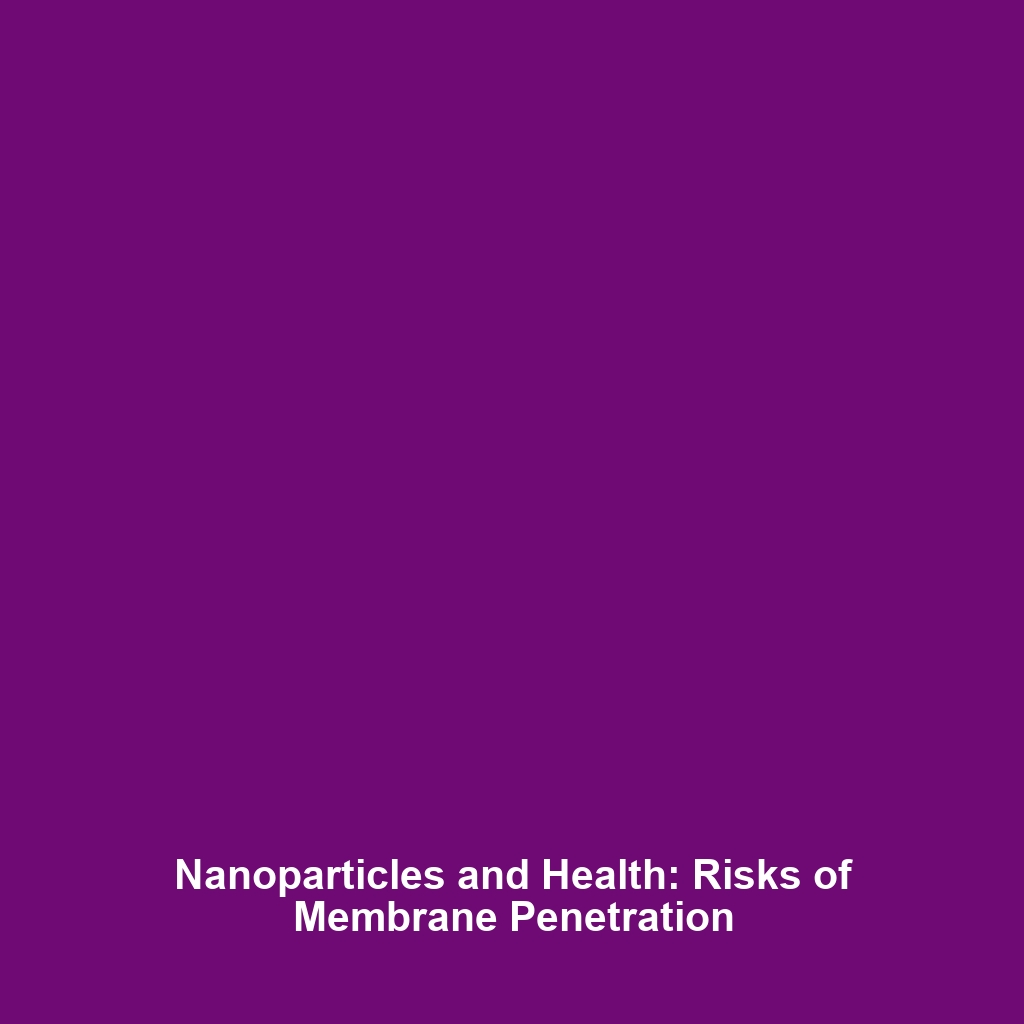Concerns About Environmental Accumulation and Long-Term Impact on Ecosystems
Introduction
As the field of Advanced Nanomaterials rapidly evolves, significant concerns about environmental accumulation and the long-term impact on ecosystems have emerged. Nanomaterials, engineered at the atomic or molecular scale, hold promise for various industries, but their persistent presence in the environment raises questions about ecological balance and sustainability. Understanding these implications is crucial for harnessing the benefits of nanotechnology while mitigating adverse effects on ecosystems.
Key Concepts
Understanding Nanomaterials
Advanced Nanomaterials refer to substances that exhibit unique physical, chemical, and biological properties due to their nanoscale dimensions. These materials are utilized across various fields including medicine, electronics, and environmental remediation. The concerns about environmental accumulation stem from the potential for these tiny particles to persist in ecosystems, potentially disrupting biological processes and food chains.
Environmental Impact
The long-term impact on ecosystems involves factors such as:
- Bioaccumulation in aquatic and terrestrial organisms
- Toxicological effects on biodiversity
- Alteration of soil and water chemistry
Addressing these issues is vital to ensuring that the benefits provided by Advanced Nanomaterials do not come at the cost of ecological stability.
Applications and Real-World Uses
How Advanced Nanomaterials Are Used in Environmental Applications
Advanced Nanomaterials are often employed in various applications that aim to reduce environmental impact:
- Water Treatment: Nanomaterials, such as carbon nanotubes, are used for filtering pollutants and toxins from water.
- Air Purification: Nanotechnology can enhance the efficiency of air purifiers through improved particulate capture methods.
- Soil Remediation: Nanoscale zero-valent iron (nZVI) is applied to help eliminate groundwater and soil contaminants.
These applications not only present solutions but also raise concerns about environmental accumulation and its long-term impact on ecosystems.
Current Challenges
Challenges of Environmental Accumulation
Studying the concerns about environmental accumulation presents several challenges:
- Difficulty in tracking and quantifying nanoscale materials in complex environments.
- Limited understanding of the biodegradation processes of certain nanomaterials.
- Insufficient regulatory frameworks to manage the environmental release of nanomaterials.
These issues highlight the need for rigorous research and policy development in the field of Advanced Nanomaterials.
Future Research and Innovations
Next-Gen Technologies
Looking ahead, research is focused on innovative approaches to mitigate environmental risks associated with Advanced Nanomaterials. Some areas of future exploration include:
- Development of biodegradable nanomaterials.
- Advanced monitoring techniques for early detection of environmental impact.
- Creation of efficient recycling methods for nanotechnology products.
These innovations aim to ensure the responsible use of nanoscale materials while safeguarding ecological integrity.
Conclusion
In summary, the concerns about environmental accumulation and long-term impact on ecosystems associated with Advanced Nanomaterials must be considered as we advance in nanotechnology. It is crucial for researchers, policymakers, and industry leaders to collaborate in addressing these challenges. For further reading on the implications and advancements in nanotechnology, explore our related articles on nanotoxicology and sustainable nanomaterials.

